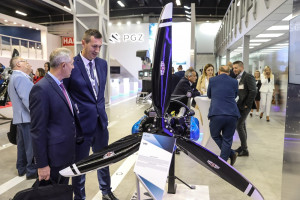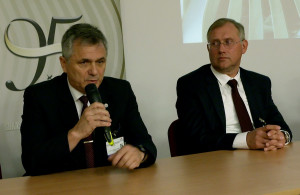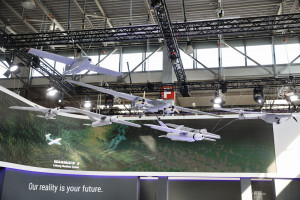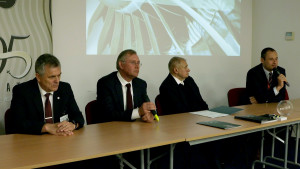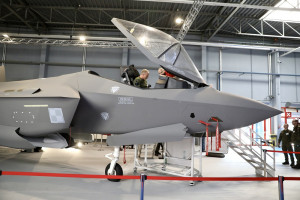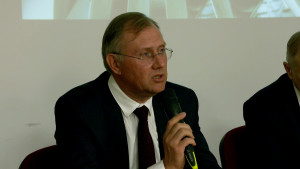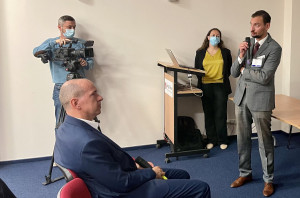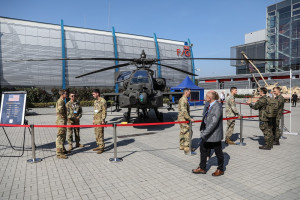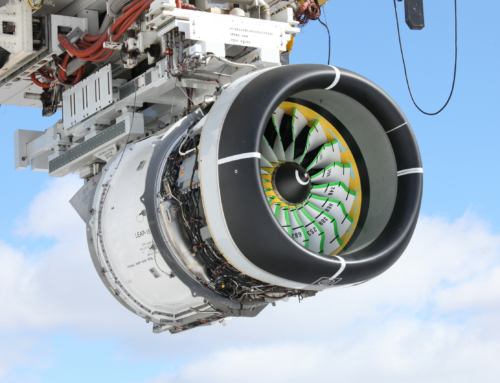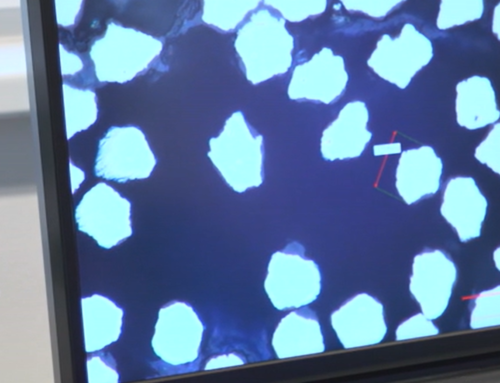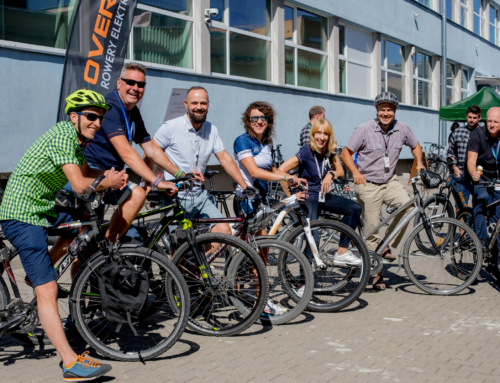“To continue its development, the aviation industry must focus on green technologies, such as hydrogen or hybrid drives” – said Marian Lubieniecki during the XXXI International Defense Industry Exhibition in Kielce.
“Innovation drives economic growth, drives GDP. We have ambitions to become one of the most developed countries. We cannot achieve this by producing the proverbial cranks for cars, we must have our technologically advanced products“ – emphasized phd Tomasz Smura, an analyst from Pułaski Foundation and one of the authors of the report “Aviation industry in Poland – opportunities, challenges and prospects”.
The prospects for the development of the aviation industry in Poland were discussed by experts: EngD Mirosław Kowalski, director of the Air Force Institute of Technology, EngD Marian Lubieniecki, president of the Management Board of General Electric Company Polska and director of Engineering Design Center, professor Paweł Soroka from the Polish Industrial Lobby and Jacek Libucha, president of PZL Świdnik. The host of the meeting organized by the Association of Polish Aviation Industry “The role of the Polish aviation industry in creating the defense potential of the Republic of Poland. Opportunities, challenges, prospects” was EngD Paweł Stężycki, chairman of the APAI and director of the Łukasiewicz – Institute of Aviation.
Aviation industry representatives in Poland are unified in their message – our country needs investments in new technologies and R&D to reach its full potential.
According to Jacek Libucha, vice-president of SPPL and president of PZL Świdnik, the basic way to develop the aviation industry and increase its capabilities in terms of know-how, technologies and R&D is to build its scale, based on what we have in Poland.
“If we assume that there is industry only where there is a final product, then, following this reasoning, there is no automotive industry in Poland. Going further – there is no Aviation Valley, where 174 companies currently operate. This is not true, we have a thriving automotive industry, we have the Aviation Valley, we have aviation clusters and we have aviation companies” – said the president of Świdnik.
In his opinion, the focus should be on the cooperation between the business and the government, that is, creating conditions that would allow us to enter the industry on a European or global scale. “We should think how to enter this markets wisely, i.e. participate in large projects, also with capital, enter them also on the basis of purchases – military and other” – emphasized Jacek Libucha.
The implementation of the assumptions of the Green Deal creates prospects for the development of low-emission technologies of the future, related to hydrogen and hybrid drives, and in the longer term to electric motors. According to experts, the next 10 years will be crucial for the development of green technologies in aviation.
“These technologies are not available in Poland yet. Nobody has an advantage or experience here, so if we enter it here and now, we have a chance to transform this industry in Poland and in the world for the benefit of Polish companies, citizens and, in fact, the entire planet” – stated EngD Marian Lubieniecki, president of the Management Board of General Electric Company Polska.
Work on hydrogen concepts is particularly beneficial for Poland, because our country is already one of the world’s leading producers of this gas.
Hybrid technologies, i.e. technologies based on electric drives, are also an opportunity for the Polish aviation industry. Conceptually, these can be both solutions supporting traditional drives, but also long-term solutions based on energy storage in batteries or electric motors.
“This decade will be critical. Whoever will enter these topics, but also international cooperation and consortia, will be – as the saying goes in motor racing – ‘first on the first turn’ and this is a much better position to win ultimately than not to enter the race at all”- said Marian Lubieniecki.
However, conducting research and development works on the implementation of innovative technologies is costly and – as Tomasz Smura notes – unpredictable, because researchers never know what results they will get and whether it will pay off. According to the expert, it is for this reason that private enterprises are reluctant to undertake such projects, and therefore the State should take a role of a motivator for such enterprises.
“When the state allocates spendings on technology, the private sector follows, because it knows that the projects – regardless of the end result, will be implemented, because it involves public funds” – explained Smura.
In Poland the motivating factor is the military sector, for which research and development should be one of the most important components determining Poland’s position in the international order.
“Technologies created for the military translate into innovations in the non-defense sector” – emphasized Tomasz Smura, giving the example of a microwave, which was created as a result of the development of radar technologies or the Internet, which was initially a tool for internal communication in the armed forces.
Experts emphasized that although Poland still has prospects for the development of aviation armaments, a wise state policy is needed to ensure that the purchase of military equipment is accompanied by the development of technology and building competence in the field of know-how.
The aviation sector in Poland provides 165 thousand jobs and 30 billion PLN of revenues for the Polish economy annually. It also has a direct impact on ground services: logistics, passenger transport, tourism industry, travel agencies, resorts, hotels and gastronomy.
Until the outbreak of the pandemic, the industry was one of the fastest growing in Europe, and until the end of 2019, Poland was its most dynamic market on the continent, with the number of passengers growing by more than ten percent year by year.
In the last two decades, the aviation industry in Poland has been created by over 170 companies, including international giants such as GE Aviation, Leonardo, Airbus, Boeing, Lockheed Martin, Pratt & Whitney, Collins Aerospace and Safran.
The largest companies in the aviation sector are working together as part of the Association of Polish Aviation Industry, which is the link between the Polish industry and ASD (AeroSpace and Defense Industries Association of Europe). In addition to APAI, Polish aviation companies are associated in clusters, the largest of which is the Aviation Valley located in southern Poland, which brings together a total of 174 aviation companies and enterprises from the supply chain, and the Silesian Aviation Cluster.

